Start your vegetable garden journey with our guide. We cover everything from choosing vegetables to the best planting times and a simple garden plan. This guide is designed for beginners and features tips on companion planting and adding flowers to your garden. Get ready to enjoy the taste of fresh, homegrown produce.
Gardening offers more than just the satisfaction of tending to your plants; it provides the unparalleled taste of homegrown fruits and vegetables. For those who haven’t had the pleasure of enjoying garden-fresh produce, prepare for a delightful surprise. The flavors and textures of freshly picked vegetables surpass anything you can buy at the store, bringing a new level of taste to your meals.
Growing Calendar: Timing Your Planting for Peak Harvest
Whether you’re just starting your gardening journey or you’ve been tending your beds for years, aligning your planting schedule with the natural cycles of the seasons can dramatically increase your yields and the quality of your vegetable crops. Here’s a guide inspired by a real-world example to help you plan your planting and harvesting schedule:
- Plan Ahead with a Seasonal Calendar: Start by creating a seasonal planting calendar, just like the one shown in the image of a farm’s availability chart. This farm lists what’s typically in season each month, from Brussels sprouts in January to watermelons in July. Use this as a template to plan your garden layout and planting times.
- Savor the Spectrum of Each Season: Notice that some vegetables, like Brussels sprouts and cauliflower, are recurring stars throughout various months. Yet, each month brings its unique options. By planting a variety of vegetables that thrive in different seasons, you’ll enjoy a steady harvest and a diverse diet.
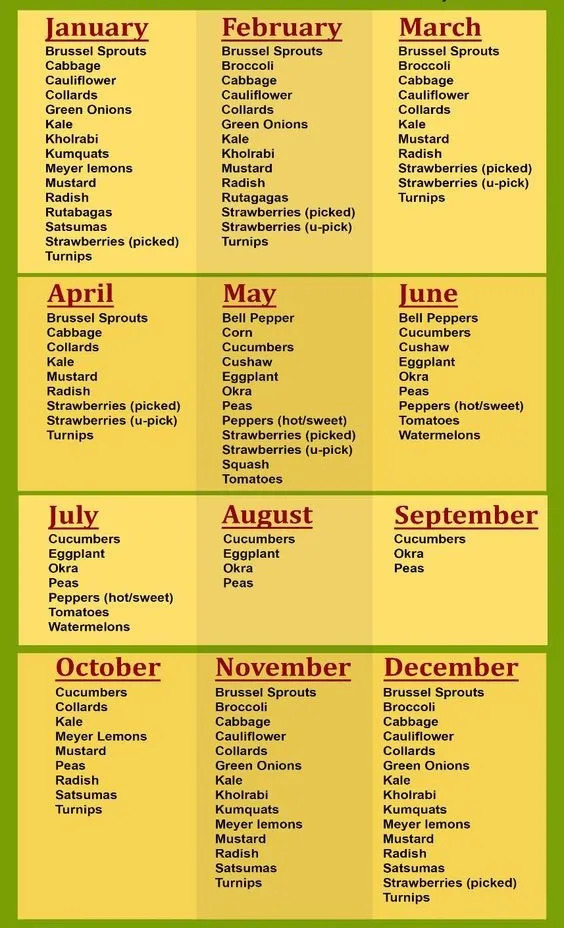
- Be Adaptable: Keep in mind that the availability of each vegetable can be affected by local climate conditions and unexpected weather changes. The farm advises a call ahead to confirm availability — a wise move for the home gardener as well. Regularly assess your garden’s progress and be prepared to adjust your care and planting strategy accordingly.
- Maximize Harvest with “U-pick” Opportunities: Engage with your garden by implementing a ‘U-pick’ strategy for vegetables like strawberries and peas, as mentioned for some months in the chart. This encourages active participation and can be a fun, hands-on way to manage your garden.
- Consistency is Key: Some crops, such as radishes and turnips, appear multiple times in the year. Plant these staples consistently, and you’ll master their care and harvesting quickly, ensuring a dependable output.
Protecting Seedlings from Pests
Young seedlings are often a target for garden pests, which can hinder their growth or even destroy them. To safeguard these tender plants, consider starting them indoors or in a protected area using plug trays or pots. This approach not only shields the seedlings from the appetites of slugs, cutworms, and birds but also provides a controlled environment for stronger development.
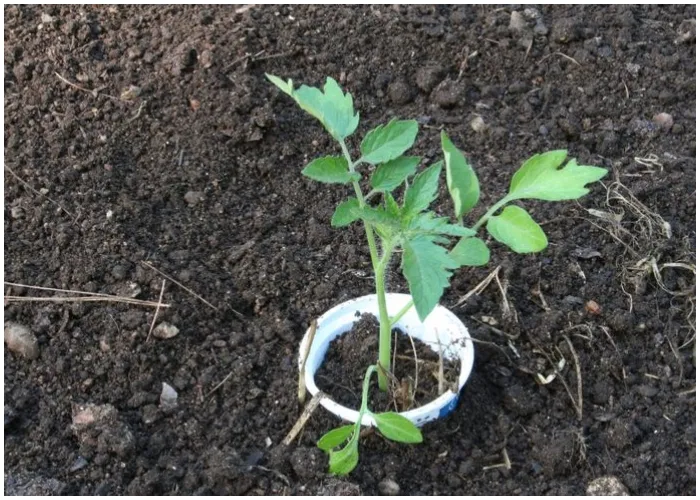
When these nurtured seedlings are finally transplanted into the garden, they are more robust and resilient, making them less susceptible to pests and more capable of bouncing back after any pest encounters.
DIY Mini Greenhouse for Seeds
Kickstart your garden with a DIY mini greenhouse using a simple 2-liter bottle! Slice the bottle in half, place your seed starter mix and seeds inside the bottom half, and then flip the top half over to create a snug dome. This makeshift greenhouse traps warmth and moisture, speeding up germination.
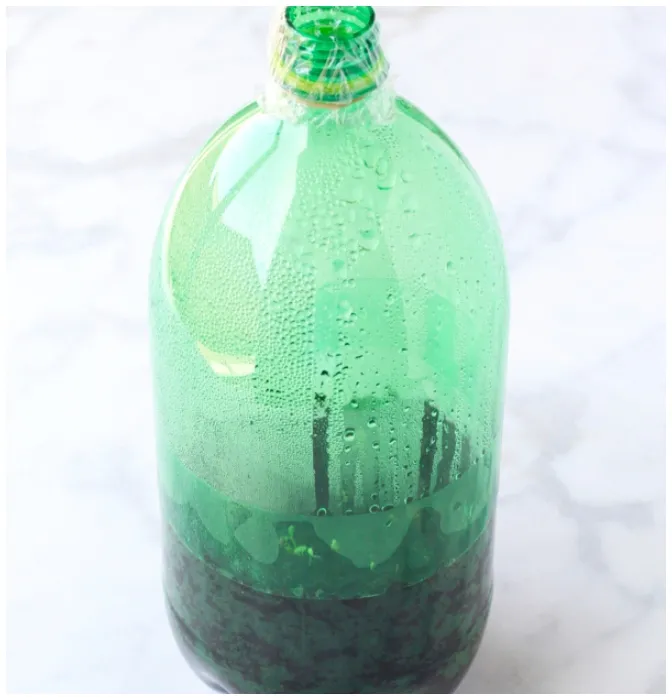
It’s a cost-effective and eco-friendly way to grow robust seedlings before the last frost. Plus, you’ll save by bypassing those pricey store-bought kits.
DIY Soaker Hose System
Make watering your garden beds both effortless and effective with a homemade soaker hose system. Start by measuring your garden beds to determine the length of soaker hose needed. For beds with two rows, it’s more efficient to run two hoses parallel rather than one down the middle. Cut the soaker hose to the required lengths using sturdy scissors, then connect the segments with male or female connectors, depending on the needed extensions. Utilize T- or L-connectors to navigate corners or split the path. Seal the hose ends with terminator caps.
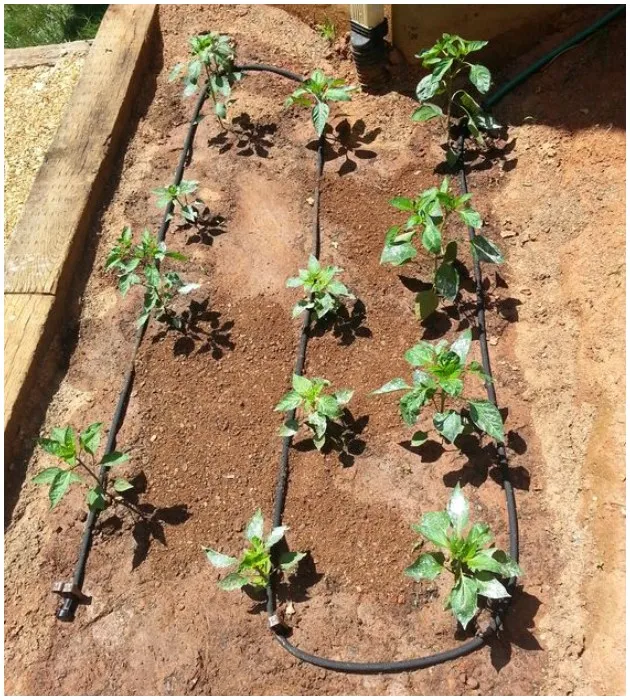
Secure the layout in place with simple garden staples to prevent shifting during maintenance tasks like weeding. Connect this system to your primary garden hose with a robust hose mender and ensure it’s tightly fixed to avoid leaks. If you encounter any drips, a bit of plumber’s tape can help seal the connections, maintaining optimal water pressure and preventing waste. This straightforward soaker hose setup will not only conserve water but also deliver it directly to the roots, promoting healthier plant growth.
Eggshell Seed Starters: Eco-Friendly and Nutrient-Rich
Repurpose your kitchen waste with this eco-friendly gardening hack. Use empty eggshells as biodegradable seed starters to give your plants a calcium boost. Simply rinse the empty eggshells, fill them with potting soil, and plant your seeds. As the seedlings grow, the eggshell will naturally decompose, enriching the surrounding soil with calcium, which is essential for healthy plant growth.
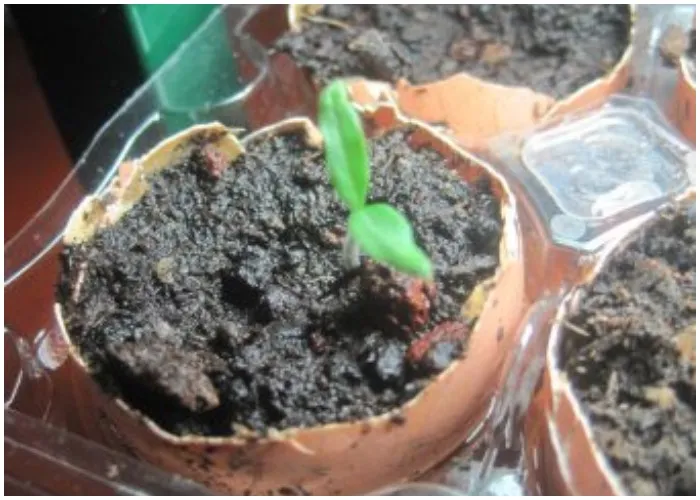
This method is not only environmentally friendly but also cost-effective, reducing waste and eliminating the need for plastic seedling trays. Plus, the eggshells can be easily planted directly into your garden, minimizing root disturbance and promoting a healthier start for young plants. It’s a simple, sustainable way to start your garden that benefits both your plants and the planet.
Bucket Gardening Hack
Grow buckets are a clever choice for gardeners seeking flexibility and control over their plant environment. These portable containers, often repurposed from 5-gallon buckets, are ideal for growing a variety of plants, from tomatoes to peppers. They’re especially useful for those with limited space. Simply add soil, seeds, or plants, and regularly water your bucket garden.
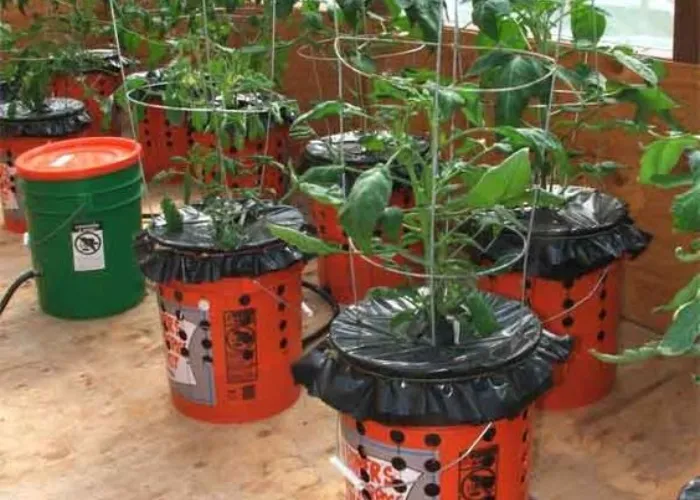
The mobility of these buckets allows you to chase the sun or shield your plants from harsh weather, providing optimal growing conditions. Plus, they’re a great way to recycle containers into productive garden tools.
DIY Growbags for Urban Gardens
Grow bags offer a practical solution for urban gardeners grappling with space constraints or non-ideal soil conditions. These flexible containers can be filled with a mix of compost and soil, providing a controlled environment for plants to flourish in small or paved areas.
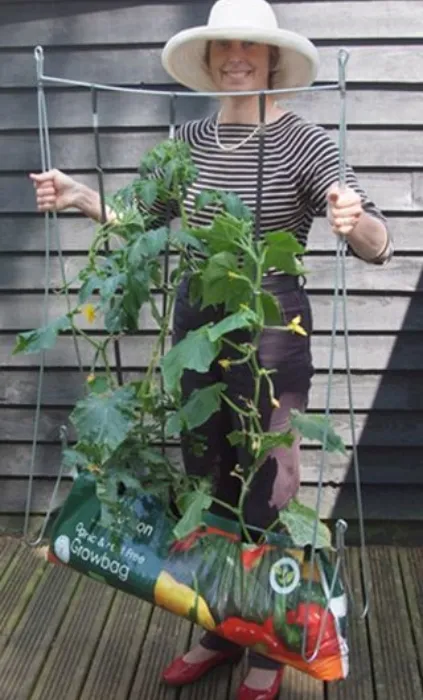
They are particularly useful for cultivating tomato plants, which benefit from the stability and warmth that the bags retain. Growbags also simplify the maintenance of soil health and watering. At the end of the growing season, the contents can be composted and the bags stored away, making them a convenient and reusable option for city dwellers looking to engage in gardening.
Vertical Gardening to Save Space
Growing upwards rather than out in smaller gardens can make a significant difference. Positioning taller plants and structures like trellises on the north side prevents shading and supports the growth of vining plants.
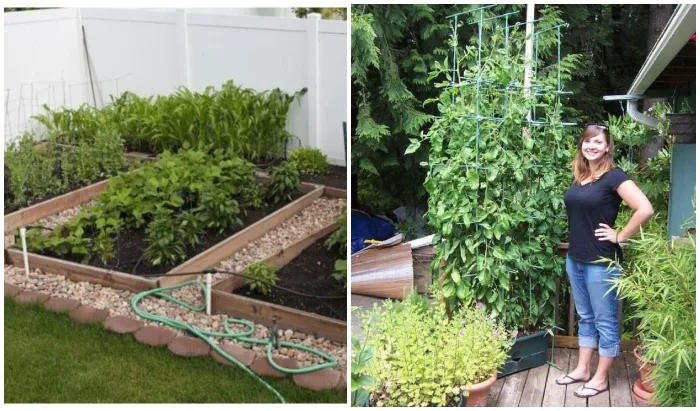
Cucumbers, tomatoes, peas, and pole beans are excellent candidates for vertical gardening, producing healthier fruits and vegetables while conserving ground space. For heavier fruits, like watermelons and squashes, providing support with slings attached to structures can prevent damage and encourage upward growth, ensuring a bountiful and organized garden.
Personalize Your Garden with Favorites
The first step in planning your garden is considering what your family enjoys eating. This approach not only maximizes the use of your garden space but also enhances the dining experience with fresh, homegrown produce that everyone loves.
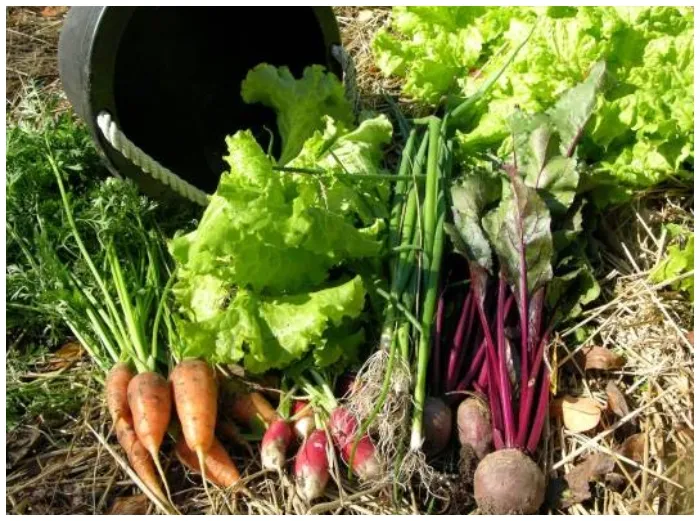
For instance, if your family is fond of green beans, dedicating a portion of your garden to grow a substantial bean crop can be both rewarding and fun. Conversely, planting vegetables that aren’t favored, like Brussels sprouts, might lead to waste and unused harvests. Tailor your garden selections to align with your family’s taste preferences to ensure every plant counts.
Avoiding the Pitfalls of Overplanting
While filling your garden with various plants is tempting, it’s essential to consider the realistic amount your family will consume. Overplanting can lead to an overwhelming amount of produce, requiring extensive care and potentially leading to waste.
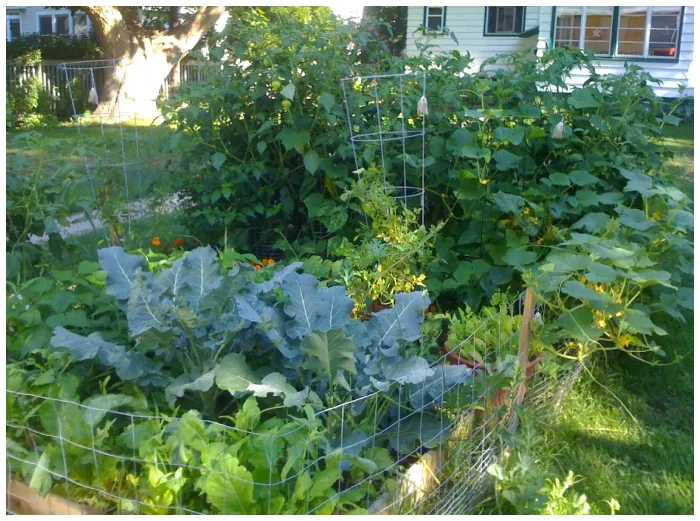
To manage your garden’s yield, plan your planting strategy based on consumption habits and available space. Should you find yourself with an excess harvest, consider sharing the bounty. Donating surplus vegetables to friends, family, or local food banks prevents waste and supports your community.
Plastic Bottle Planters
Turn your plastic waste into a garden treasure with this eco-friendly hack. Plastic bottle planters are a fantastic way to repurpose empty bottles and can be a fun DIY project. Here’s how to make one: Cut the bottom third off a large plastic bottle. Use the top two-thirds as the planter by filling it with soil and planting your seedlings inside.
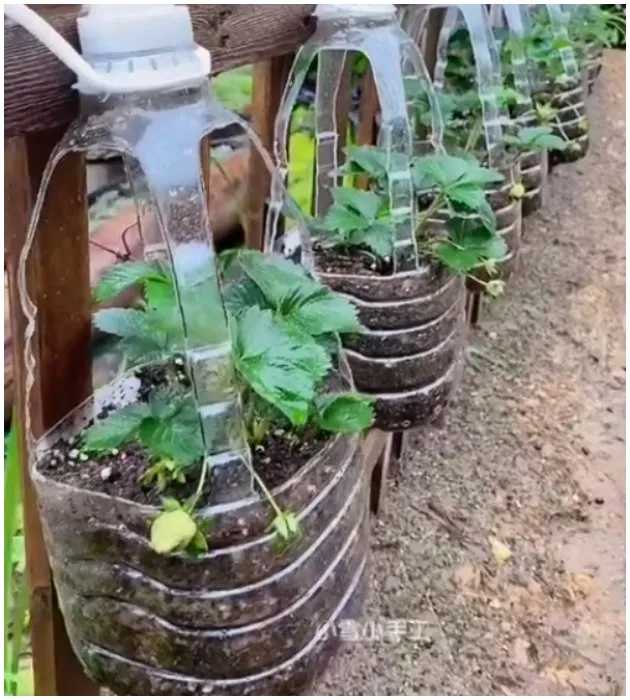
Invert the bottom part and place it over the plant as a makeshift greenhouse, which can protect young plants from harsh weather and maintain humidity. For watering, you can add small holes at the bottom of the planter section, ensuring excess water drains out, or use the bottle cap to regulate water flow. This system is perfect for growing herbs and small vegetables, and it’s a great way to start seedlings before transferring them to a larger garden.
Streamlined Bulb Planting with Crate Method
Simplify bulb planting with the crate method – a smart strategy for gardeners. Arrange your bulbs in open crates, allowing for even spacing and easy planting. The crates can be directly placed into pre-dug trenches, ensuring bulbs are planted at a consistent depth.
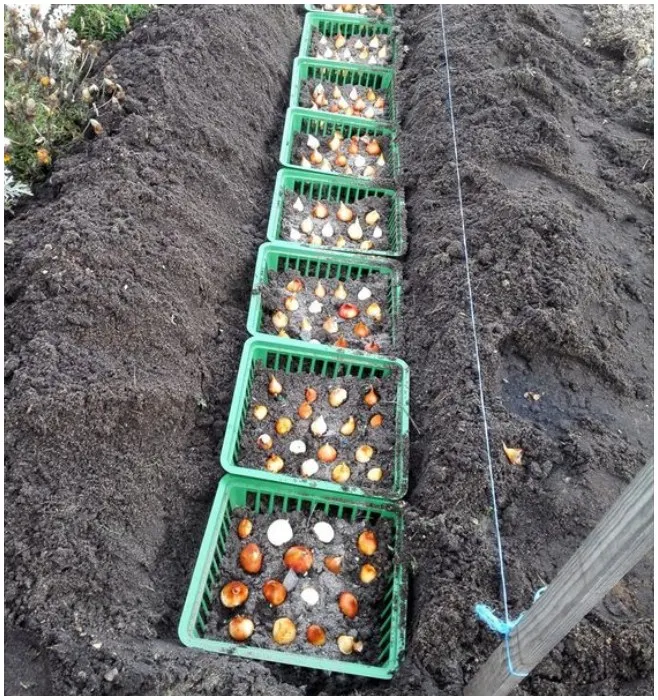
This technique not only saves time but also helps with creating a tidy, visually appealing pattern of blooms. Once positioned, cover the crates with soil, water as needed, and wait for spring to see your garden come alive with color and form.
Thrive with SIPs
In regions facing severe droughts, sub-irrigated planters (SIPs) offer a groundbreaking solution for water conservation in gardening. These self-watering systems are ideal for areas with no soil and can also help grow exceptionally large vegetables with minimal effort. SIPs work by allowing water to ascend through the soil via capillary action, ensuring plants receive moisture from below rather than through traditional surface watering.
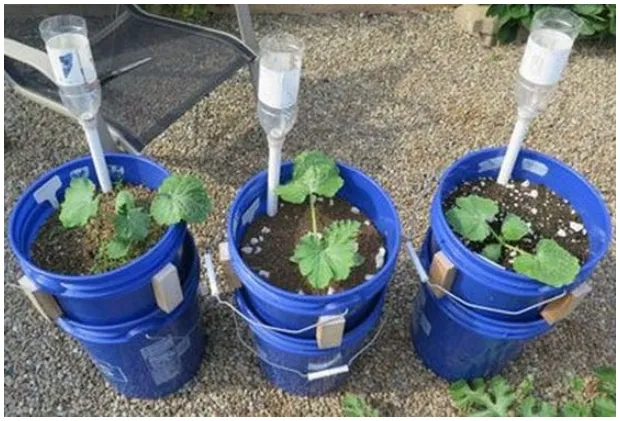
This method not only conserves water but also promotes healthier, more robust plant growth. To optimize your SIPs, use a potting mix with good aeration to facilitate this upward movement of water. Transform your gardening practice with SIPs and watch your garden flourish while efficiently using every drop of water.
Crafting Your Own Bin from Hardware Cloth
Creating your own compost bin from hardware cloth is an efficient way to recycle large yard waste and contribute to your garden’s sustainability. To start, you’ll need about 12 feet of wire fence hardware cloth, which will form the body of your bin. Use electrician’s plastic wire ties to connect the pieces, create hinges, and attach a sturdy redwood handle for easy access. The lid should be made from a finer mesh to protect the contents while still allowing air circulation, and its edges should be bent to create a hem for added stiffness and safety.
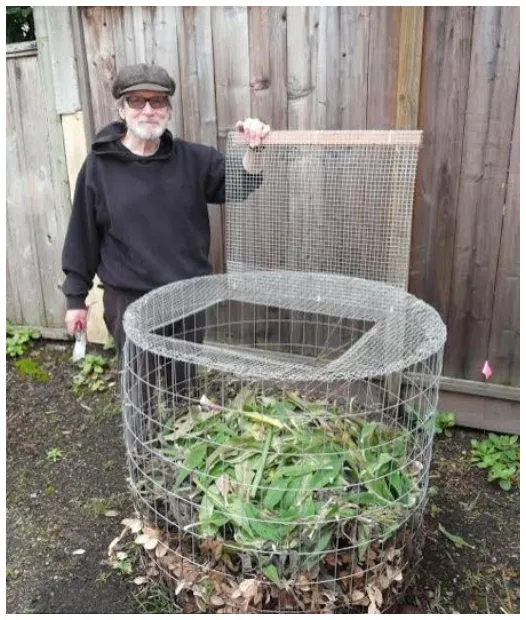
This compost bin design is ideal for those who prefer a robust, DIY approach to composting. Keep in mind that cutting and bending the wire can be challenging due to its strength and the potential for sharp edges. Always wear safety glasses and gloves to protect yourself during assembly. With a bit of effort, this project not only serves as a practical tool for composting but also opens up possibilities for other garden projects using hardware cloth.
DIY Rope Dispenser from a PET Bottle
For any gardener, having tear-resistant ropes readily available can streamline various garden tasks such as tying plants, marking seed rows, or hanging bird feeders. A homemade rope dispenser made from an empty PET bottle is a simple, effective solution to keep ropes organized and easily accessible. Start by cutting off the top third of the bottle.
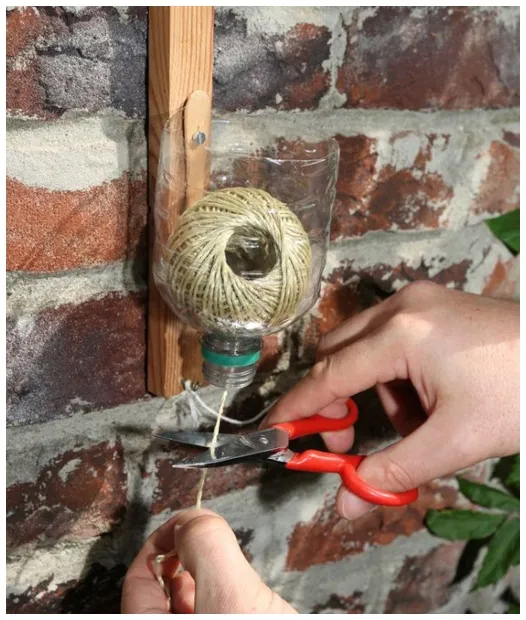
Next, punch or drill two holes on the side of the lower section. Insert a wooden popsicle stick inside across these holes to prevent the rope from fraying. Thread two screws from the inside out through the holes and secure them to a wooden strip with nuts. This allows you to mount the dispenser wherever it’s most convenient in your garden or shed. This dispenser ensures that the rope is tangle-free, and you can cut the desired length without any hassle.
DIY Vine Trellis for Controlled Growth
Growing vines in a controlled space can be challenging, but creating a simple trellis makes it much easier. This DIY project uses basic materials and can be set up in minutes, providing an excellent support structure for your climbing plants.
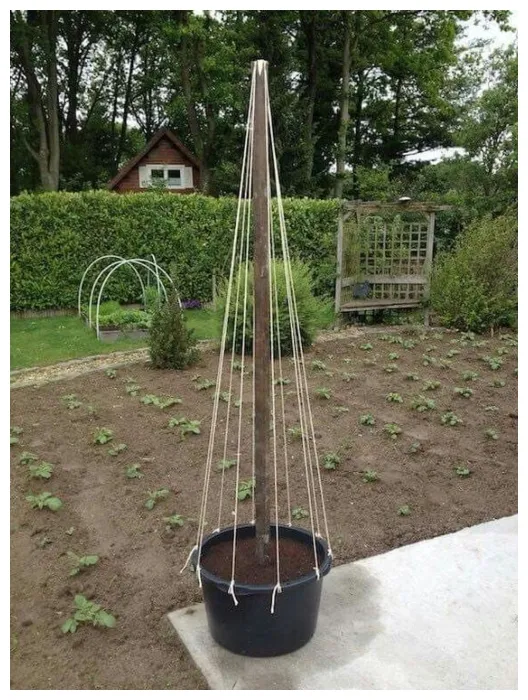
Start by placing a tall wooden stake in the center of a large pot filled with soil. Secure the stake by packing the soil tightly around it. Next, attach strings to the top of the stake and evenly space them out, anchoring the other ends to the rim of the pot. This setup allows vines to climb the strings, promoting vertical growth and keeping your garden organized. Regularly guide the vines along the strings to ensure they grow as desired, creating a neat and efficient growing space for your plants.
DIY Cloche for Seedling Protection
Creating a durable cloche for your seedlings can significantly enhance their growth by shielding them from pests and harsh weather. This cloche fits a raised bed of approximately 35 inches by 71 inches and utilizes easily accessible materials such as flexible plastic pipes, tool clips, nuts, bolts, and insect garden netting. The design focuses on simplicity and efficiency, ensuring that your plants are well-protected with minimal effort.
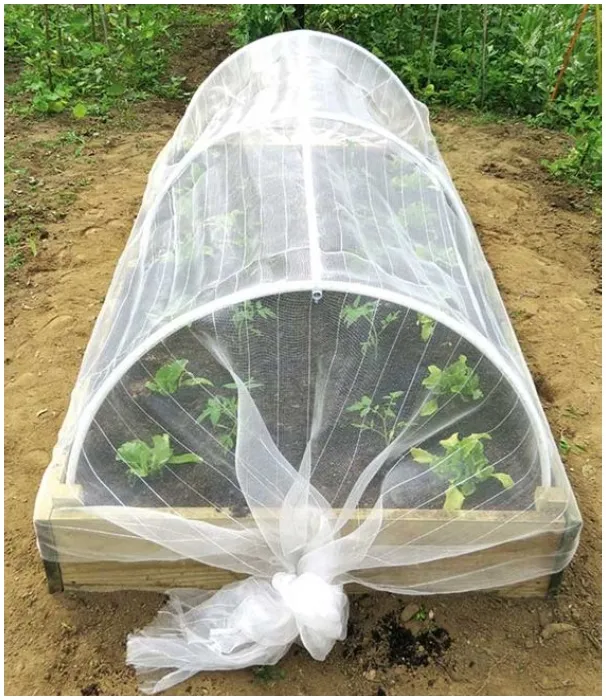
To assemble, secure the plastic pipes into hoops using the tool clips attached to your garden bed, forming a sturdy frame over the plants. The insect netting is then draped over these hoops and secured at the ends with downpipe clips, providing a tight fit that keeps out unwanted guests while allowing light and water to reach the plants. This cloche is not only functional but also customizable, making it a perfect fit for any gardener aiming to protect their young plants from external threats.
Eco-Friendly Garden Markers
Here’s a resourceful way to use up those empty seed packets and clearly mark your garden beds. For this project, you’ll need an empty seed packet, a paint stirrer or any suitable stake like a skewer or wooden spoon, and a glass jar. Start by opening the seed packet from the bottom, ensuring it remains intact.

Attach the seed packet to your chosen stake, positioning it so the packet is visible and securely fastened. Then, cap it off with a recycled glass jar placed over the seed packet. This clever setup not only recycles materials but also protects the packet from rain, wind, and sun, keeping your garden labels clear and intact through the seasons. This method offers an effective, economical, and environmentally friendly way to keep track of your planting.
Fish Ladder for Your Garden Stream
Creating a fish ladder is a fantastic way to help fish navigate through different levels of a garden stream or pond. This project ensures that fish can move freely and safely between various water levels, mimicking natural water flow.
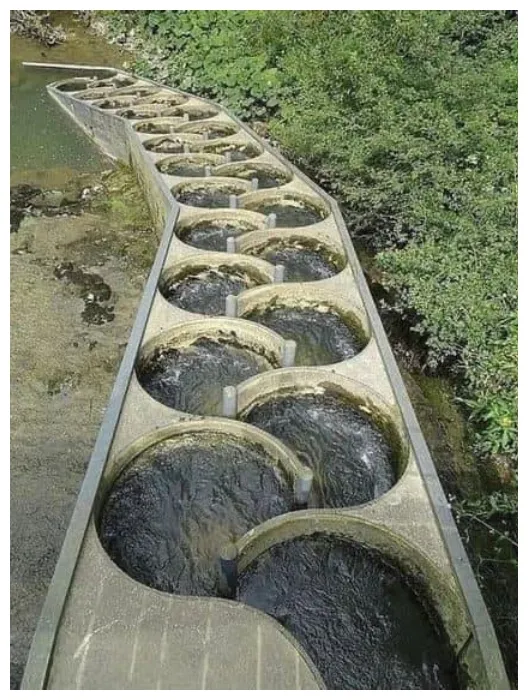
Start by arranging a series of circular containers or basins in a staggered, descending order along your stream or pond edge. Ensure each container is slightly lower than the one before it to create a cascading effect. Secure the containers in place, connecting them with small pipes or channels that allow water to flow from one to the next. This setup enables fish to swim up and down the watercourse easily. The fish ladder not only supports the natural movement of fish but also adds an attractive, dynamic element to your garden’s water feature.
Drip Irrigation
Make the most of your watering routine with drip irrigation – it’s a gardening game-changer! This system delivers water directly to the soil around your plants, reducing waste and ensuring that each plant gets the hydration it needs without the excess.
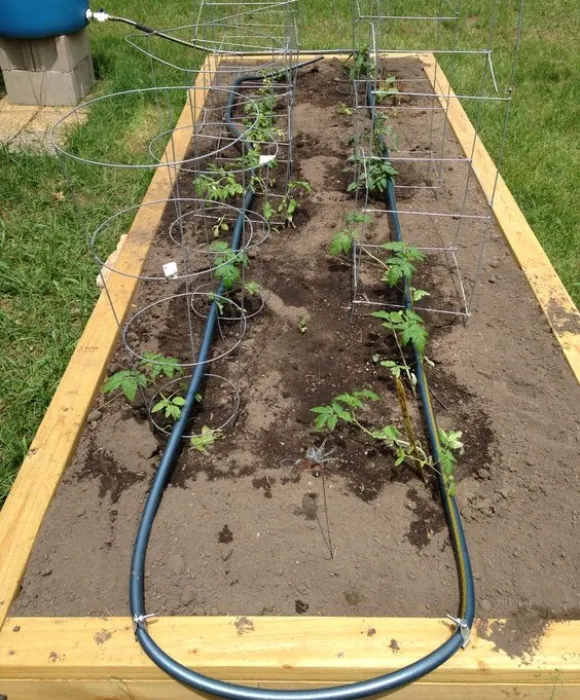
Not only does it save water, but drip irrigation also keeps the leaves dry, reducing the risk of disease. Plus, it’s a time-saver; set it up once, and your garden can stay quenched with minimal effort. The consistent moisture makes for happy, healthy plants and a lush garden.
Growing Tomatoes Hack
Tomatoes are a garden favorite, offering a rewarding harvest for a little bit of care. They thrive in warm conditions and need at least 6 to 8 hours of sunlight daily. Start with young plants or sow seeds indoors before the last frost, then transplant them to your garden when the soil warms up.
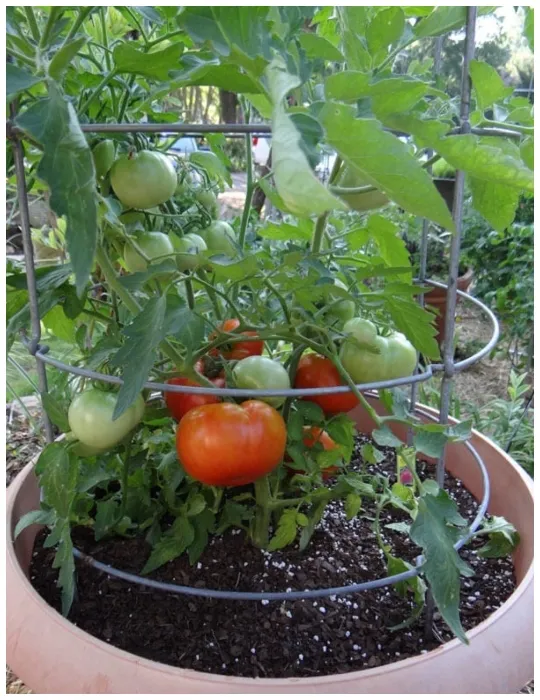
Support them with stakes or cages to encourage upward growth and air circulation. Regular watering and occasional fertilizing will reward you with a lush harvest from summer into early fall. Tomatoes are ready when they are firm and fully colored.
Growing Lettuce Tip
Lettuce is a must-have in any beginner’s garden due to its fast growth and minimal care requirements. Ideal for cooler climates, it can be harvested as early as 30 to 70 days after planting, depending on the variety. Sow lettuce seeds directly into moist, well-drained soil, spacing them out to avoid overcrowding.
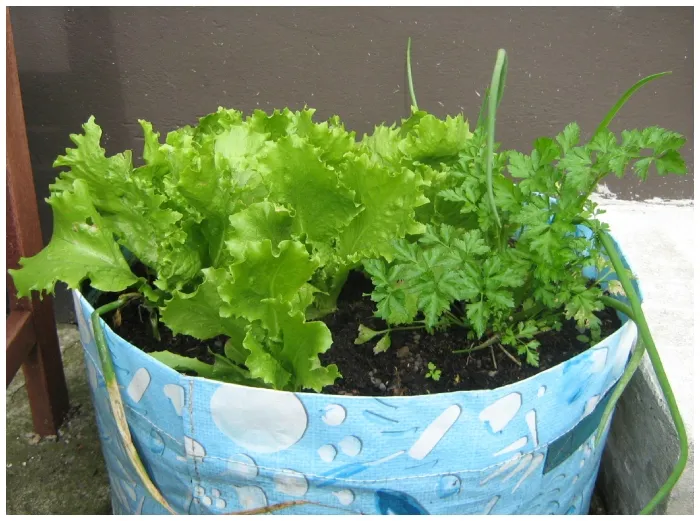
Lettuce prefers partial shade in warmer climates, which helps to prevent bolting (going to seed). Regular watering and occasional fertilization allow you to enjoy multiple harvests from the same plant by picking the outer leaves first.
Companion Planting
Selecting companion plants that have complementary needs can significantly improve garden health and productivity. For instance, pairing shallow-rooted plants with deep-rooted ones prevents resource competition and optimizes nutrient uptake.
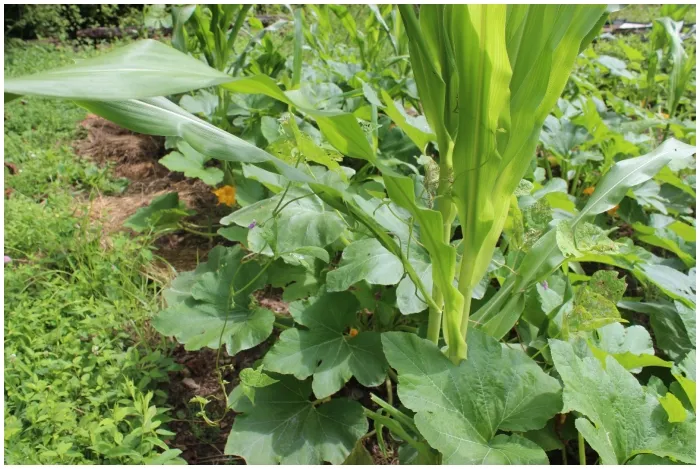
Furthermore, combining heavy feeders with light feeders reduces nutrient depletion. Effective companion planting, exemplified by the Three Sisters method (corn, beans, and squash), promotes biodiversity and leads to a more resilient garden ecosystem. Consult companion planting charts to identify harmonious pairings for your garden.
Maximizing Space with Square Foot Gardening
Square foot gardening is a revolutionary way to organize your garden that maximizes yield while minimizing waste. Instead of traditional row planting, the garden is divided into small, square sections, typically one foot on each side, creating a tidy grid. This method is not only space-efficient but also helps manage crop rotation and reduces weeding. Each square is dedicated to a specific number of plants, depending on their size, allowing for a diverse and plentiful garden even in the smallest of spaces.
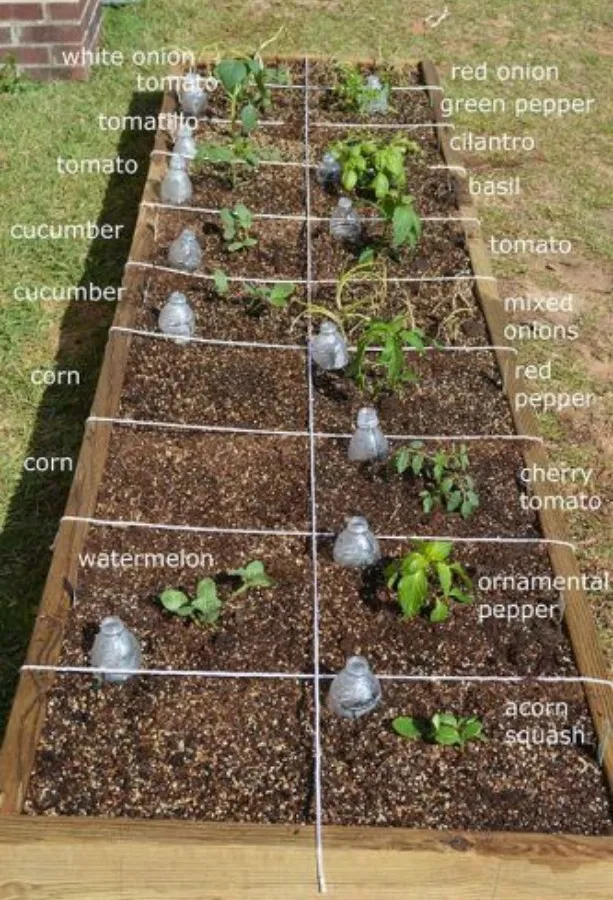
It’s an excellent approach for those looking to grow a variety of vegetables and herbs, as it allows for close planting, which can lead to a more bountiful harvest. This method encourages gardeners to think vertically as well, making the most of upward space for crops like tomatoes and beans, thereby truly optimizing every square inch of your garden.
Upcycling with a DIY Bike Wheel Trellis
Turn an old bicycle wheel into a clever and sustainable trellis for your climbing plants. This unique gardening hack not only adds a whimsical touch to your garden but also promotes vertical growth, allowing plants like beans, peas, and some flowering vines to thrive without sprawling across the ground. By securing the wheel atop a sturdy pole and anchoring it in the ground, you create a sturdy support system.
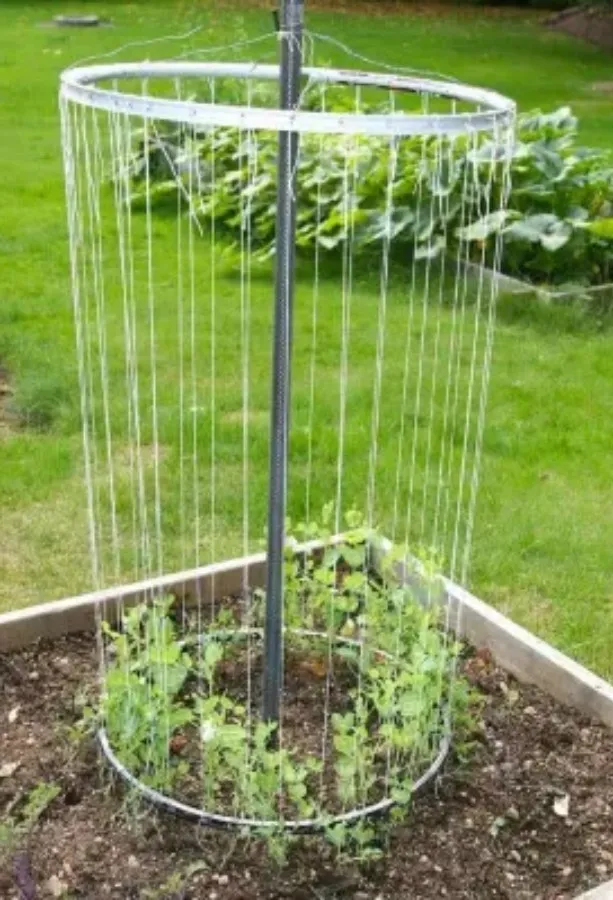
The spokes of the wheel serve as perfect guides for tendrils to wrap around, encouraging upward growth and better air circulation, which can lead to healthier plants and a more abundant harvest. This upcycled trellis is a conversation starter and a testament to the beauty and function that can be found in repurposed materials
Simple DIY Trellis for Vertical Gardening
Maximize your garden space and enhance plant health with a DIY trellis, perfect for climbing plants like cucumbers, peas, and beans. Start by placing sturdy wooden stakes or metal poles at each end of your plant row, adding additional supports in the middle for stability. Securely tie durable garden twine or wire horizontally at various heights to support growth.
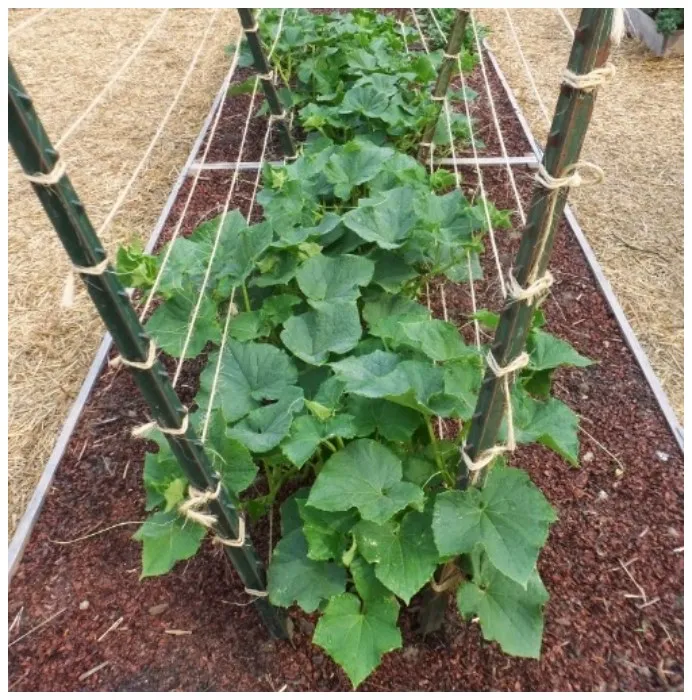
As your plants grow, gently guide them to weave through the trellis. This setup not only improves air circulation and sun exposure but also keeps plants off the ground, reducing disease risk and simplifying harvesting. This functional and cost-effective trellis design is an ideal way to keep your garden organized and your plants thriving.
Clever Bird Deterrent Hack for Tomato Plants
Protect your ripening tomatoes from birds with an inventive and festive solution—red Christmas baubles. Simply hang a few shiny red ornaments among your tomato plants. Curious birds, attracted by the bright color, will peck at these hard, unsatisfying baubles instead of your precious tomatoes.
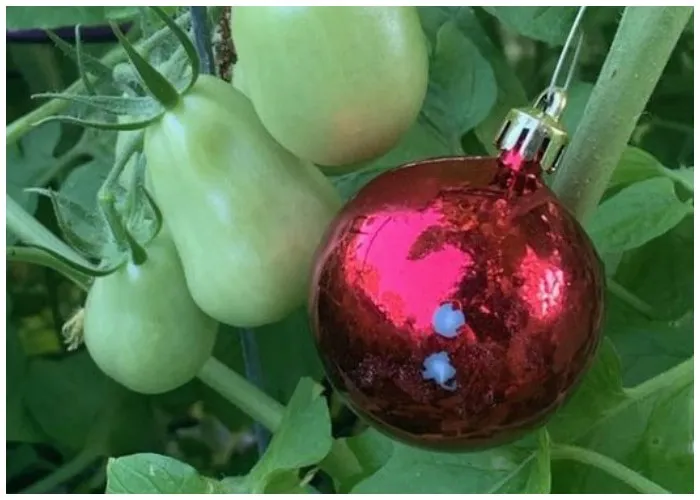
Disappointed by the lack of reward, they’ll likely leave the real fruit alone in future attempts. This method not only saves your tomatoes but also adds a decorative touch to your garden. It’s a practical and visually appealing way to keep your tomatoes safe and ensure you get to enjoy the fruits of your labor without the need for harmful deterrents.
Diversifying Your Garden Selection
Expanding beyond the typical grocery store offerings can make your garden a source of unique and exciting vegetables, like tomatillos or specialty lettuces, not readily available in your area. This diversity can introduce new flavors and culinary possibilities to your meals.

Moreover, certain vegetables, such as garden-fresh lettuce and tomatoes, are notably superior in flavor when grown at home compared to their store-bought counterparts. Similarly, cultivating your own herbs offers a fresh and cost-effective alternative to purchasing them, enhancing your cooking with the taste of freshly picked produce.
Growing Peas
Peas are one of the first crops you can plant in early spring, thriving in cooler temperatures. Choose between climbing varieties, which require support, or bush types that are more compact. Plant seeds directly into moist, well-drained soil when the ground can be worked.
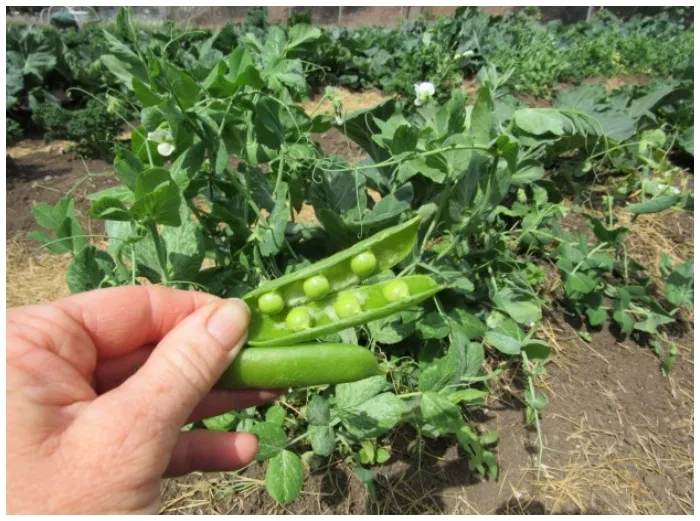
Peas prefer full sun but can tolerate partial shade. Keep the soil moist, especially during flowering and pod development. Harvest time varies from 60 to 70 days, depending on the variety. Pick regularly to encourage more pods to form, enjoying the sweet taste of fresh peas straight from the vine.
Growing Onions
Onions are indispensable in the kitchen and surprisingly straightforward to grow in the home garden. They can be started from seeds, sets (small bulbs), or transplants. Plant onions in a sunny spot with fertile, well-drained soil early in the spring.

They require consistent moisture and benefit from a layer of mulch to retain soil moisture and suppress weeds. Onions are ready to harvest when their tops begin to fall over and yellow. They can be used fresh from the garden or stored later, making them a versatile and valuable crop for any gardener.
Ensuring Continuous Garden Care
A successful garden requires ongoing attention, especially during peak growing seasons. If summer travel plans are on your calendar, consider your garden’s needs, particularly for plants like tomatoes and zucchinis that thrive in midsummer.
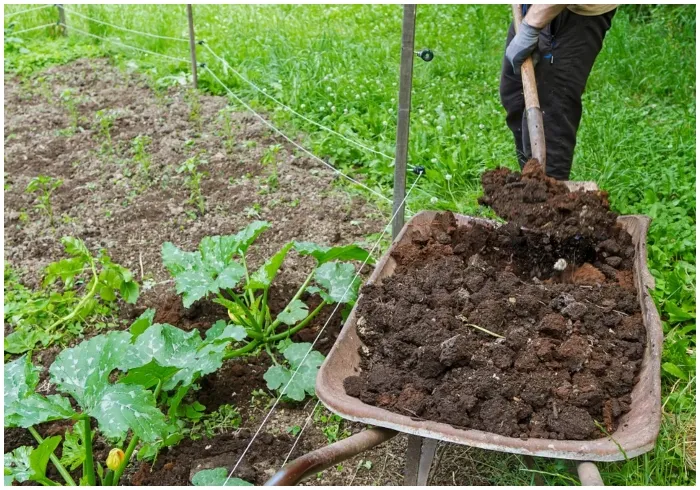
Planning for garden care in your absence is crucial, whether arranging for someone to tend to your plants or choosing crops requiring less maintenance. Alternatively, focusing on cool-season crops that grow in the milder temperatures of spring and fall can be a strategic choice for those unable to provide summer care.
From Scraps to Soil: Kitchen Waste Upcycling
Transforming kitchen leftovers into garden gold is an excellent way to reduce waste and enhance plant growth. Sour milk can be an unexpected ally for your plants, serving as a nourishing fertilizer when mixed with soil.
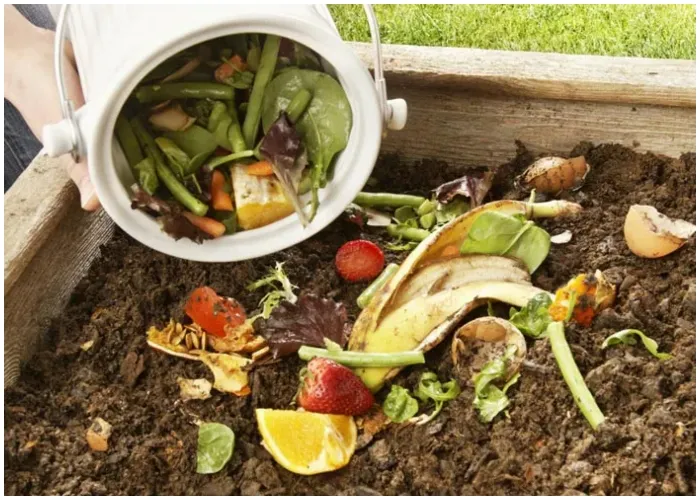
It’s also a formidable foe against powdery mildew on leaves when diluted and sprayed. Similarly, stale flour, rich in nitrogen and essential micronutrients like calcium, can be sprinkled over the soil to enrich it, particularly benefiting leafy greens. Adding it to your compost pile also works wonders. Remember, most raw, plant-based kitchen scraps are compostable and can be repurposed to fortify your garden beds with vital nutrients.
Growing Chard, Spinach, or Kale
Chard, spinach, and kale are nutrient-rich leafy greens that are easy to grow and highly versatile in the kitchen. These greens prefer cooler temperatures but can tolerate partial shade, making them suitable for spring and fall planting. Sow seeds directly into moist, fertile soil, and thin as needed.
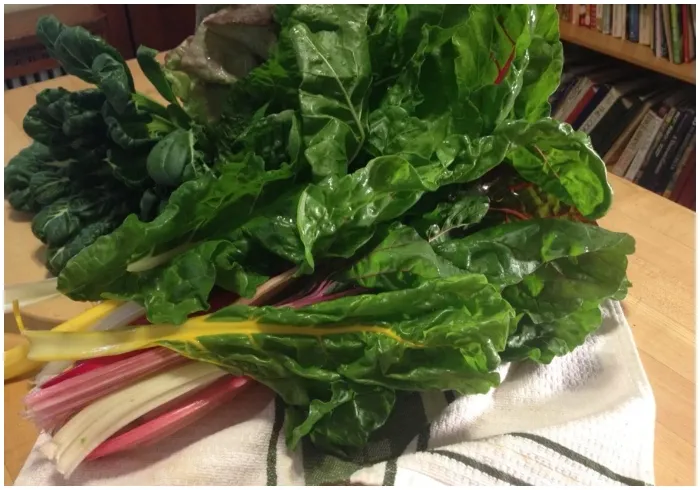
Regular watering and occasional fertilizing will support their growth. Harvest leaves from the outside to encourage continuous production. These greens can be harvested at almost any size, from baby leaves to full-grown, usually within 30 to 60 days after planting.
The Importance of Seed Selection
Starting your garden with high-quality seeds is a fundamental step toward a fruitful harvest. While seeds are more economical than purchasing plants, the success of your garden hinges on seed germination. Investing a little extra in reliable, high-quality seeds can significantly impact your garden’s productivity.
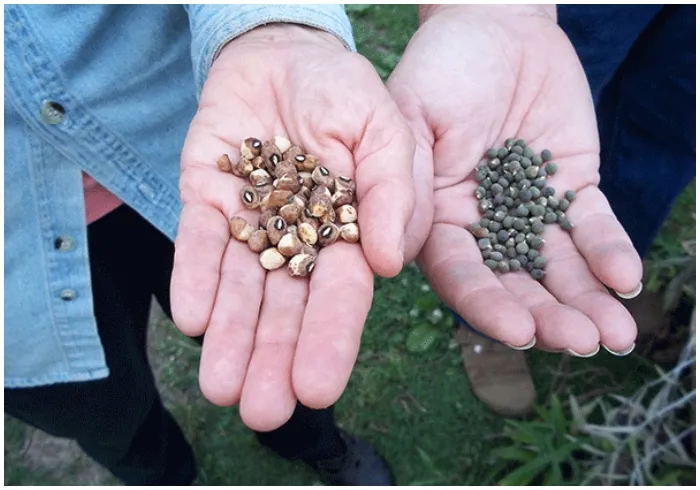
This initial investment ensures a higher yield and maximizes the efficiency of your garden space and effort. Choosing reputable seed sources and selecting varieties suited to your climate and soil can lead to a rewarding gardening experience and abundant harvests.
Growing Carrots
Carrots, beloved for their sweetness and crunch, thrive in sandy or loamy soil that allows for deep root development. Plant seeds directly in the garden in early spring or late summer for a fall harvest, and thin seedlings to prevent overcrowding and ensure proper growth. Carrots need regular watering to keep the soil consistently moist.
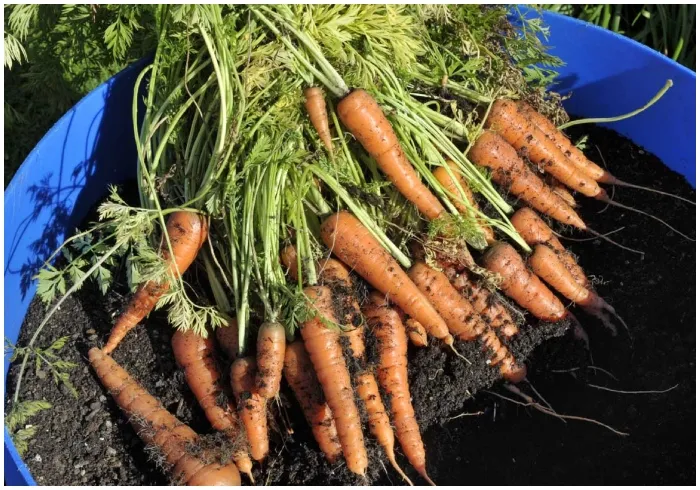
They are ready to harvest in about 50 to 80 days depending on the variety. Gently pull them from the soil when they reach the desired size, typically when the tops of the carrots start to emerge from the soil.
Cool-Season vs. Warm-Season Vegetables
Vegetables aren’t one-size-fits-all when it comes to planting times. Cool-season varieties such as lettuce, broccoli, and peas excel in the brisk weather of early spring and fall. These plants can start your gardening season early and extend it later into the year.
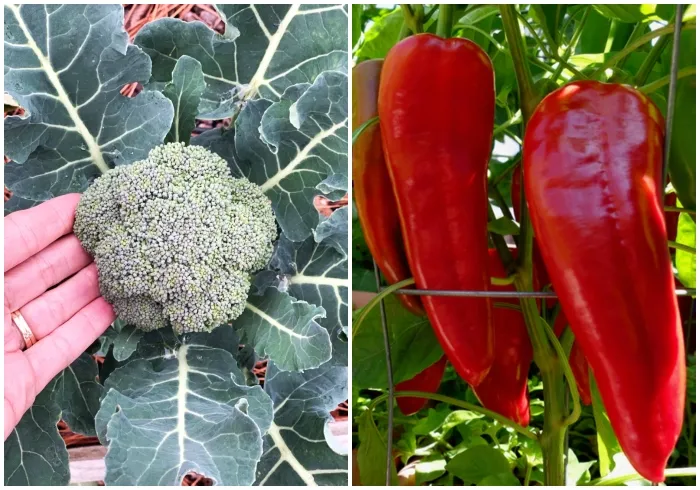
Conversely, warm-season vegetables like tomatoes, peppers, and cucumbers wait for the soil to warm up in late spring and summer. Knowing the difference between these two types ensures a continuous and productive harvest throughout the year by planting each vegetable at its ideal time.
Growing Beets
Beets are a versatile choice for any garden, yielding edible roots and greens. They prefer cooler temperatures but grow well in both spring and fall. Sow beet seeds directly into well-drained, fertile soil, thinning seedlings to prevent crowding. Beets require consistent moisture for uniform root development.
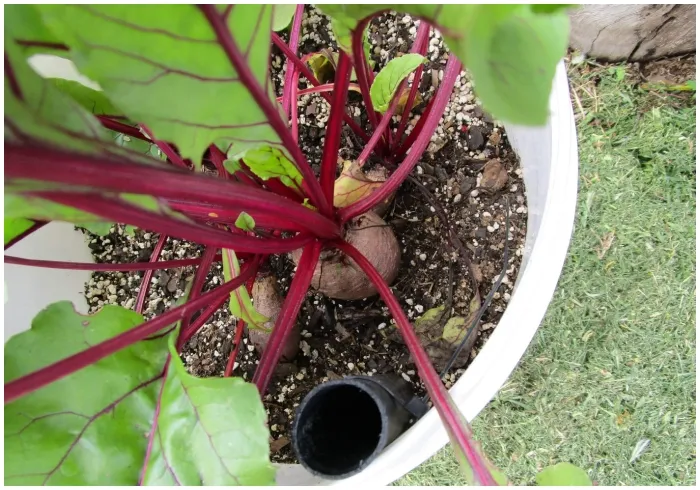
Harvest time varies from 50 to 70 days for roots, but you can pick the greens earlier. Beets are ready when their roots are about 1 to 3 inches long. Their ability to thrive in cooler temperatures makes them a rewarding crop for beginners.
Maximizing Light for All Your Plants
Plant placement is crucial for managing sunlight in your garden. Tall plants, such as pole beans on trellises or sweet corn, should be positioned on the north side to prevent them from shading shorter plants.
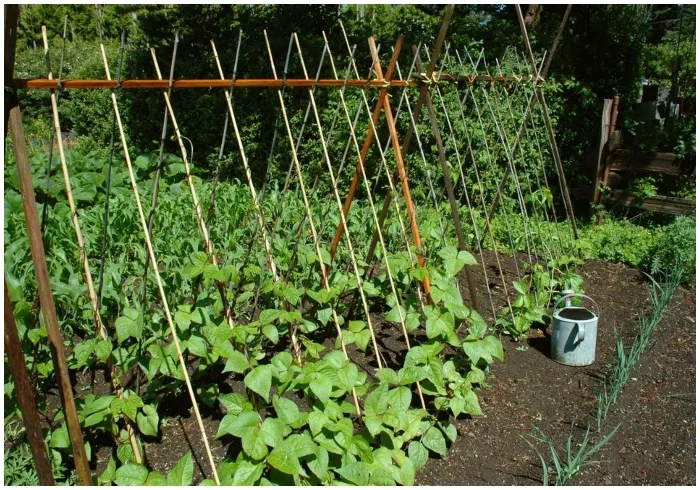
If your garden receives partial shade, allocate those areas for cool-season vegetables that can benefit from less direct sunlight during hotter months. This strategy helps make the most of your garden space, ensuring each plant receives the sunlight it needs to thrive.
Growing Peppers
Peppers, ranging from sweet to spicy, add vibrant colors and flavors to your garden. They require a warm, sunny spot and well-drained soil to flourish. Start seeds indoors in cooler climates, then transplant them outside after the danger of frost has passed and the soil is warm. Peppers need regular watering, but allow the soil to dry slightly between waterings to prevent waterlogging.
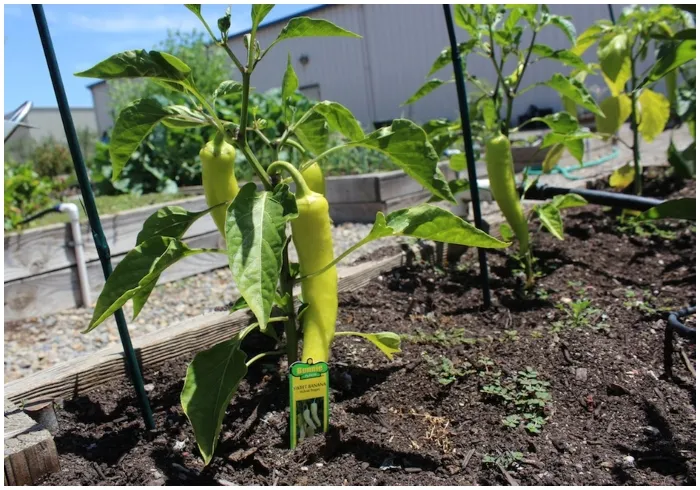
They mature in 60 to 90 days with proper care, offering a continuous harvest throughout the summer and fall. Harvest when they reach your desired size or color to encourage further growth.
Incorporating Perennial Crops
While many garden vegetables are annuals, requiring replanting each year, perennials like asparagus, rhubarb, and certain herbs will grow back annually without the need for replanting.
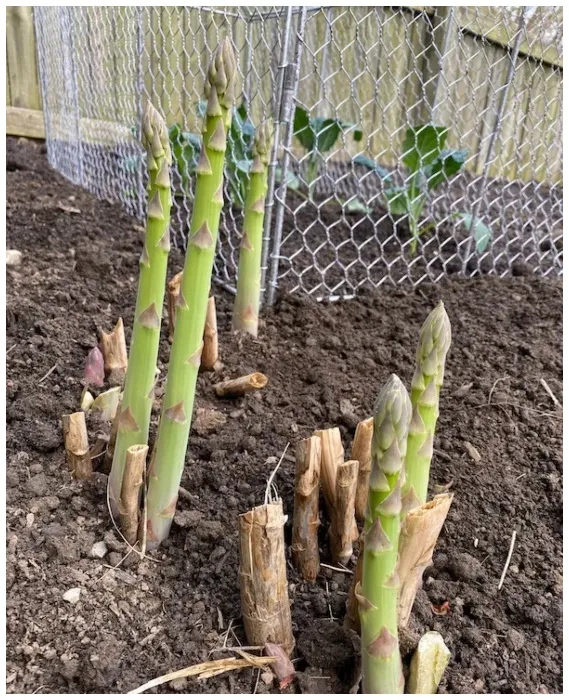
Planning permanent beds or locations for these crops can save effort in future seasons and provide a reliable harvest year after year. Perennials require a long-term commitment but offer the reward of less maintenance and a steady supply of produce over time.
Growing Zucchini
Zucchini is known for its prolific production, often yielding more than the average family can consume. Plant zucchini seeds in a sunny, well-drained part of your garden after the last frost, giving them plenty of space to spread out.
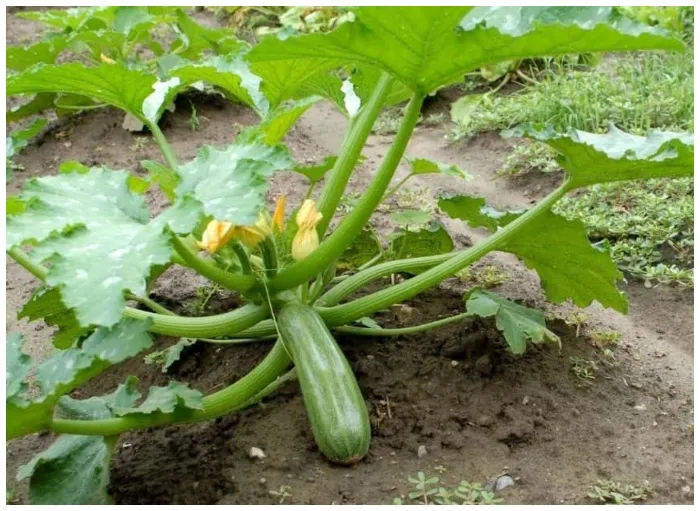
They love warm soil and require consistent watering, especially as the fruits begin to grow. Zucchini can be harvested when about 6 to 8 inches long, usually within 50 to 70 days after planting. Regular harvesting encourages continued production throughout the growing season.
Crop Maturation
Vegetables vary not just in their seasonal preferences but also in how quickly they mature and how long their harvest period lasts. Quick-maturing crops like radishes and bush beans offer a fast turnaround but have a brief harvest window.
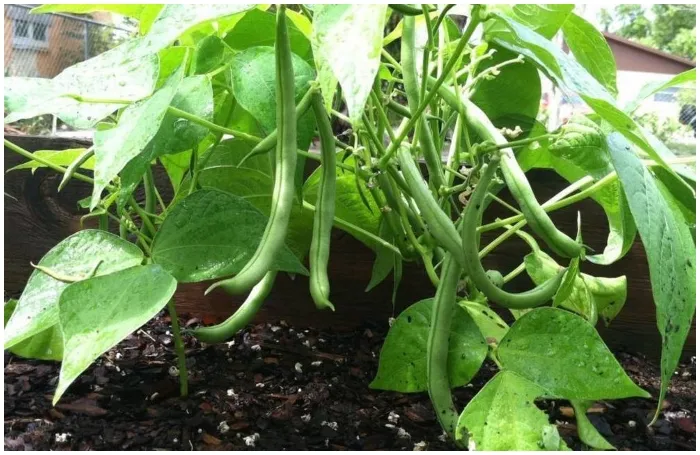
In contrast, plants like tomatoes might take longer to start producing but then continue to yield fruit over an extended period. Seed packets usually indicate “days to maturity,” guiding when to expect harvest and helping plan for continuous production throughout the growing season.
Growing Radishes
Radishes are the sprinters of the vegetable garden, maturing in as little as 20 to 30 days. They are perfect for impatient gardeners or those looking to introduce children to gardening. Plant radish seeds directly into excellent, fertile soil, spacing them out for proper growth.
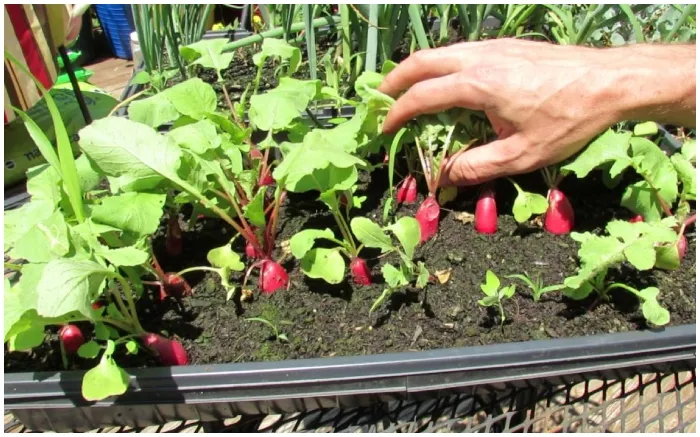
They prefer cooler temperatures, making them ideal for spring and fall. Radishes need consistent moisture to develop their trademark crisp texture. Harvest them when they reach a suitable size to prevent them from becoming woody.
Staggering Plantings for Continuous Harvest
Staggering your plantings can be beneficial to avoid a glut of produce all at once, especially with fast-maturing vegetables like lettuce. By sowing seeds at intervals—every few weeks—you can ensure a steady supply of fresh vegetables rather than facing a surplus that needs immediate harvesting.
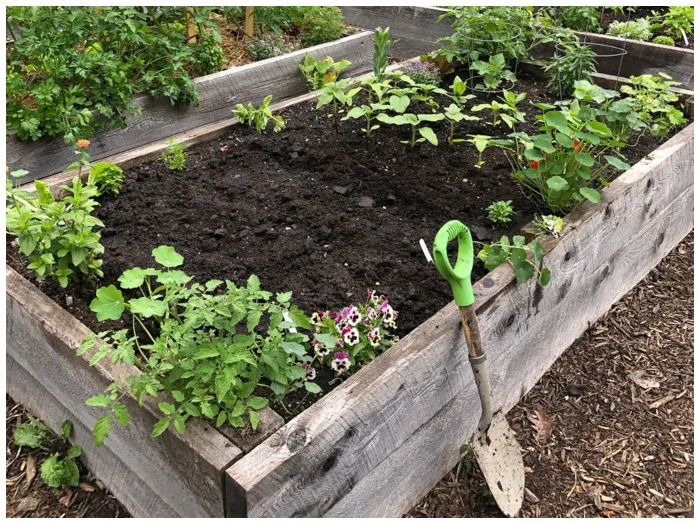
This technique, known as succession planting, is particularly useful for maintaining a consistent supply of your favorite veggies and enjoying fresh produce throughout the growing season.
Growing Green Beans
Green beans are known for their ease of growth and high yield. Perfect for a sunny spot in your garden, they come in both bush and pole varieties, with the former being more suitable for smaller spaces. Plant the seeds directly into the soil after the last frost, ensuring they have plenty of sunlight and moist, well-drained soil.
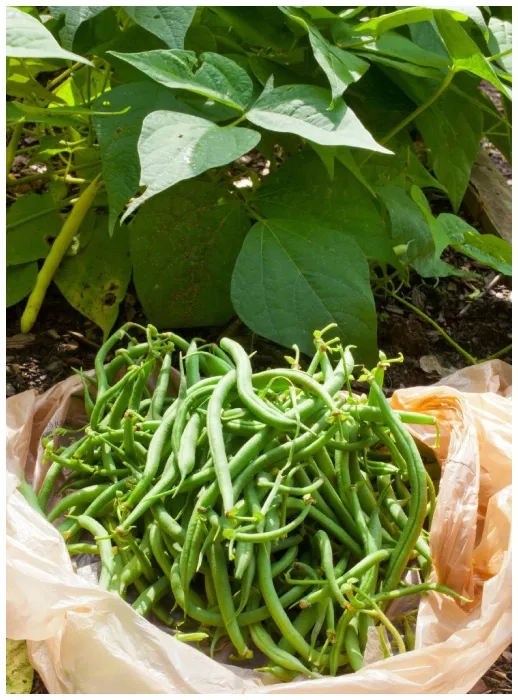
Green beans require minimal care beyond regular watering. You’ll know they’re ready to harvest when the pods are firm and can be snapped quickly, typically within 50 to 60 days of planting.
Raised Beds for Efficient Gardening
Raised beds revolutionize how we grow vegetables. By adopting this method, you can produce up to ten times more yield in the same space than traditional row gardening. Raised beds keep external weeds at bay, reduce soil compaction, enhance water retention, and mitigate the threat of slugs and other pests.
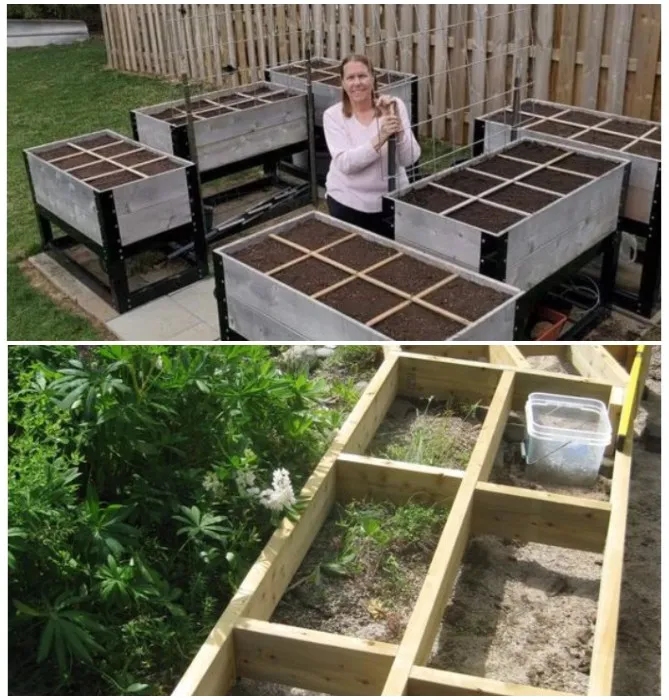
This controlled environment allows for focused care—watering, weeding, and fertilizing become more efficient tasks. Moreover, employing season-extension techniques like cold frames and row covers can prolong your growing period, maximizing your garden’s productivity throughout the season.
Continuous Harvest with Succession Planting
Succession planting is a strategic approach to garden management, ensuring your plots remain productive. You can maintain a continuous growth cycle by replacing harvested crops with new seedlings.
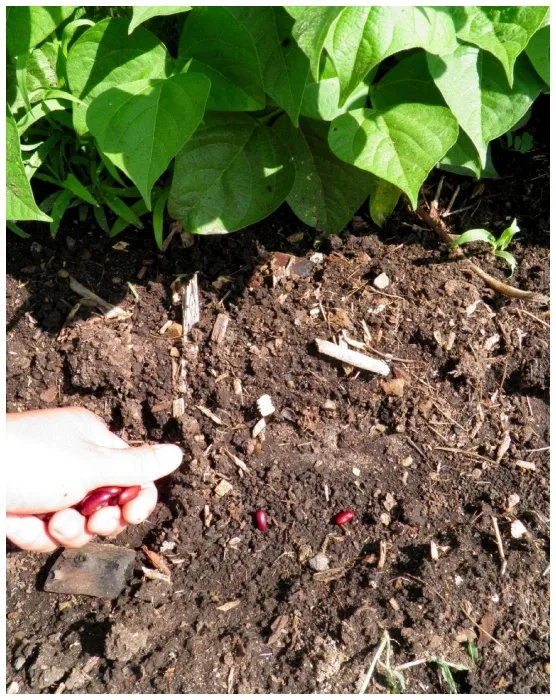
Opt for quick-growing vegetables, such as radishes and salad greens, to make the most of your garden space across the season. This method spreads out your harvest and increases the variety of vegetables available for your table.
Growing Garlic
Garlic is remarkably easy to grow and requires very little space in the garden, you can Plant garlic cloves in fall for a harvest the following summer. Choose a sunny spot with well-drained soil. Plant the cloves about 2 inches deep and 4 inches apart, with the pointed end facing up.
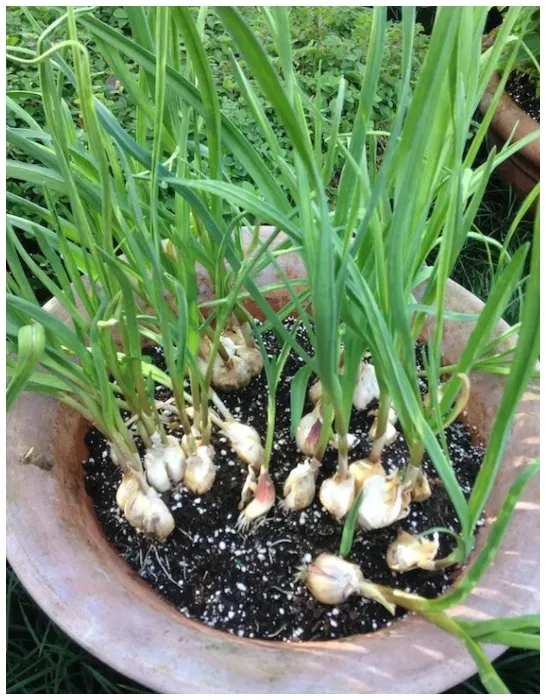
Garlic needs minimal care; just keep the soil moist and weed-free. As the lower leaves begin to brown, it’s time to harvest. Garlic not only enhances the flavor of your dishes but also has health benefits and can improve the growth of other plants in your garden by repelling pests.
Interplanting
Interplanting, or growing quick-maturing plants among slower-growing ones, optimizes the use of garden space. This technique allows you to harvest small crops before larger ones require more room.
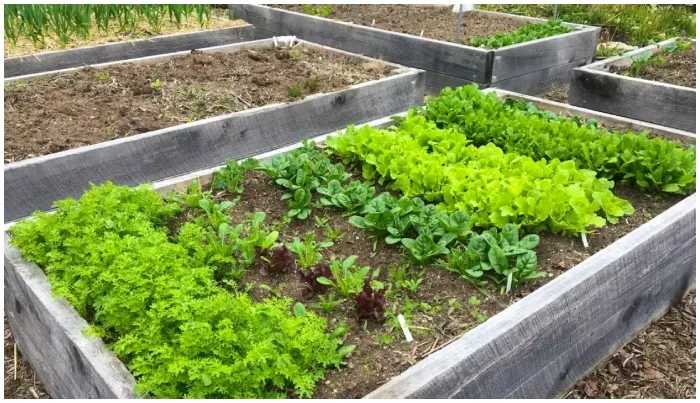
By planting crops close enough that their mature leaves touch, you create a natural mulch that suppresses weeds and conserves moisture. As the garden progresses, harvesting the early-maturing plants provides the necessary space for the remaining crops to flourish, enhancing overall yield and efficiency.
Growing Pumpkins
Pumpkins are a fun and rewarding addition to the garden, especially if you’re looking forward to fall decorations or homemade pumpkin pie. They require a sunny location and plenty of space to sprawl. However, smaller varieties can be managed in raised beds with careful training. Plant pumpkin seeds directly into warm, fertile soil after the last frost. Regular watering and occasional feeding will support their rapid growth and large fruit development.
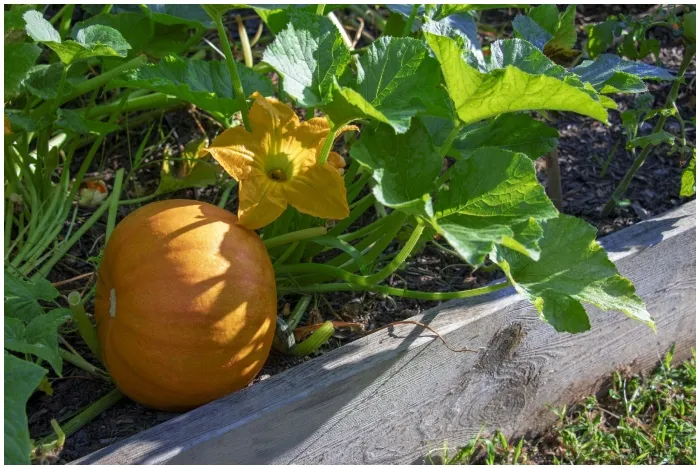
Pumpkins are ready to harvest when they have reached their desired size, and the skin has hardened, signaling they are ripe. Growing your own pumpkins can be a delightful project, culminating in a festive autumn harvest.
Create a Veggie Wash Station for a Clean Harvest
Avoid tracking garden grime into your kitchen by building a portable vegetable wash station. It’s simple: construct a sturdy frame from two by fours, then attach a wire mesh screen on top with U-shaped pins. Whether you add legs or set it atop a bucket, this station is easy to move to wherever you’re harvesting.
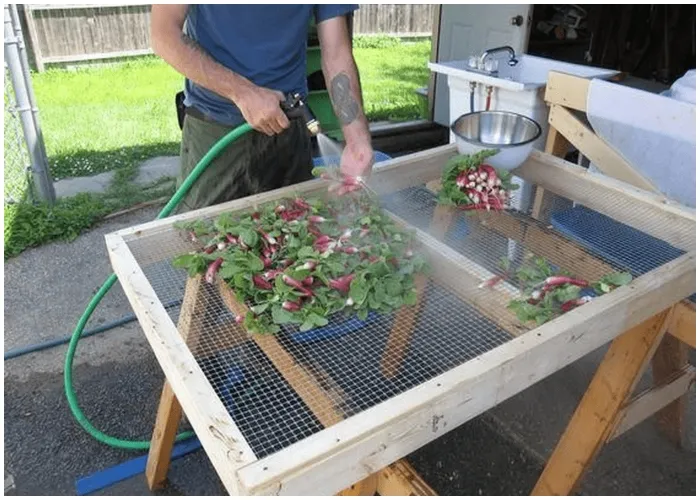
Just lay your vegetables on the mesh, hose them down, and watch as the water and soil fall right through, leaving your produce ready for the kitchen, mess-free!
Vinegar-Based Weed Terminator
Confront your garden’s weed woes with a homemade vinegar-based solution. When pulling weeds little by little isn’t cutting it, this potent mix can help. Combine 1 gallon of white vinegar with 1 cup of salt and a tablespoon of liquid dish soap.
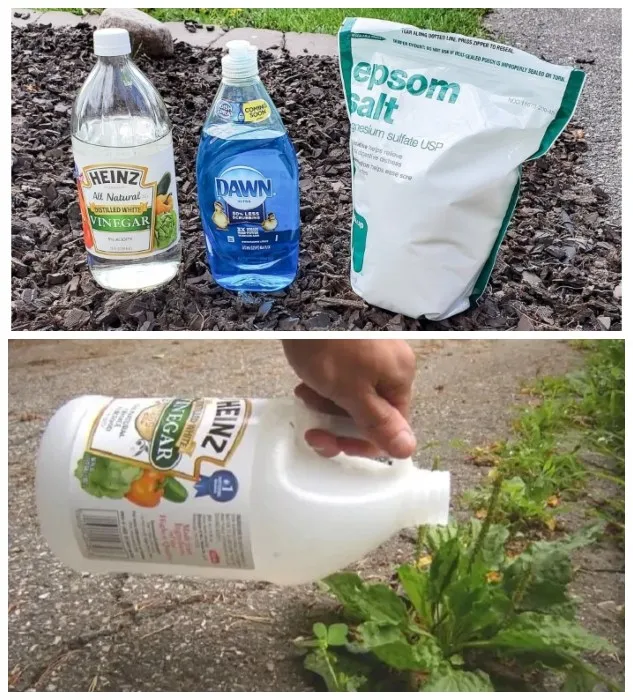
This concoction creates an effective herbicide that can tackle unwanted plants. Transfer it into a spray bottle for easy application. A spritz on the weeds during a sunny day can help reclaim your garden without the need for harsh chemicals.
Stackable Storage Bin Greenhouse
Assemble a mini greenhouse with ease using clear stackable storage bins. These bins, typically found around the house, can create the perfect humid and warm environment for seed starting. Simply stack the bins as shelves, with the lower ones holding soil and seed trays, and use the uppermost bin as a lid to let in sunlight and retain warmth.
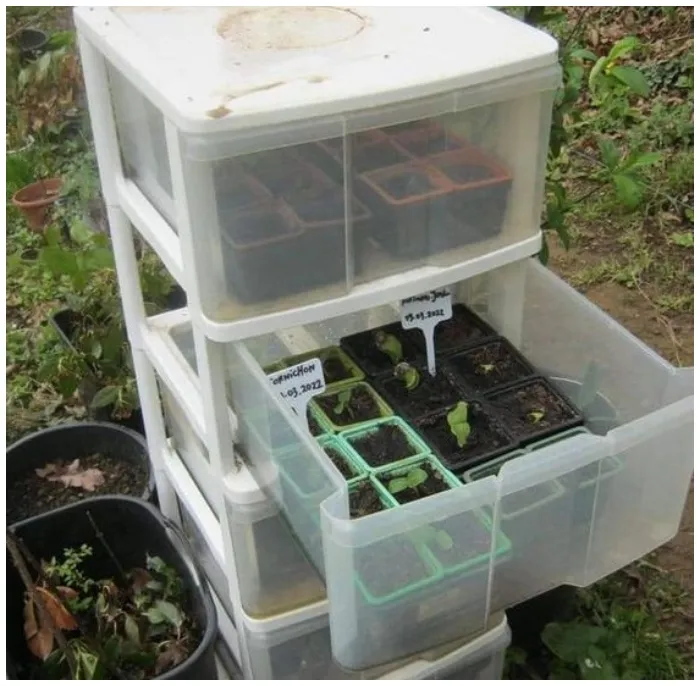
This makeshift greenhouse is a fantastic way to make use of household items while providing a protected space for your seedlings to grow, and it can be easily disassembled and stored when not in use.
DIY Soil Blocks for Seed Starting
Gardeners looking for a sustainable start to their plants might consider making their own soil blocks. This method involves compressing a moist soil mixture into compact units that can be used to germinate seeds without the need for plastic trays or pots. The soil block, once formed, is an eco-friendly way to nurture seedlings until they’re ready to be transplanted into the garden.
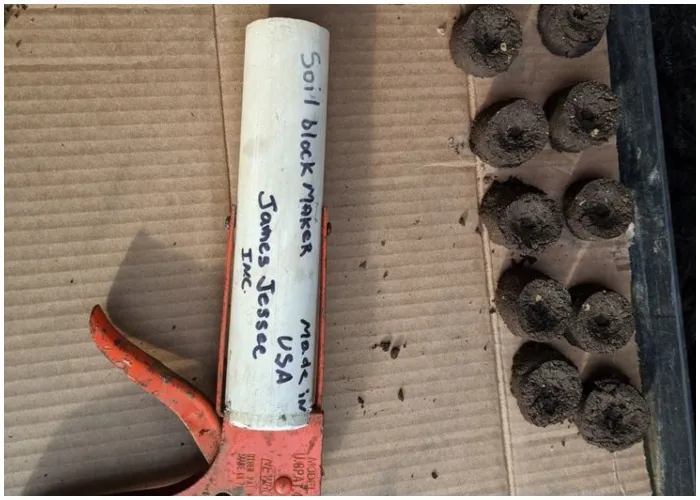
Utilizing simple tools, such as the one shown, gardeners can create uniform blocks that hold their shape well and provide ample space for roots to grow. This technique minimizes transplant shock, as the entire block can be moved without disturbing the root system.
Selecting a Sunny Spot
A crucial step in garden planning is ensuring your vegetables get enough sunlight. Aim for a spot that receives 6 to 8 hours of direct sunlight daily, as most vegetables need this to thrive. Sunlight is vital for photosynthesis, the process by which plants convert light into energy, leading to healthier growth and better yields.
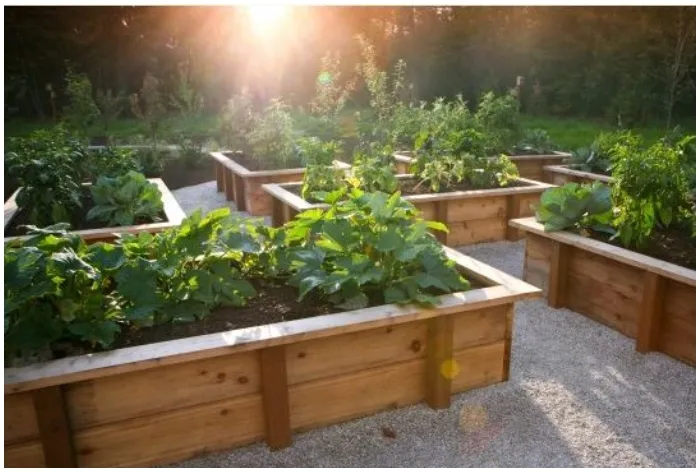
While some vegetables, especially leafy greens, can tolerate partial shade, most fruit-bearing plants require full sun. Assess your garden space throughout the day to identify the sunniest areas, ensuring your garden’s success from the start.
Ensuring Proper Drainage
Well-drained soil is non-negotiable for a prosperous vegetable garden—areas where water pools can spell disaster for your plants, leading to root rot and disease. If you’re faced with poorly drained soil, consider raised beds or elevated rows to enhance drainage.
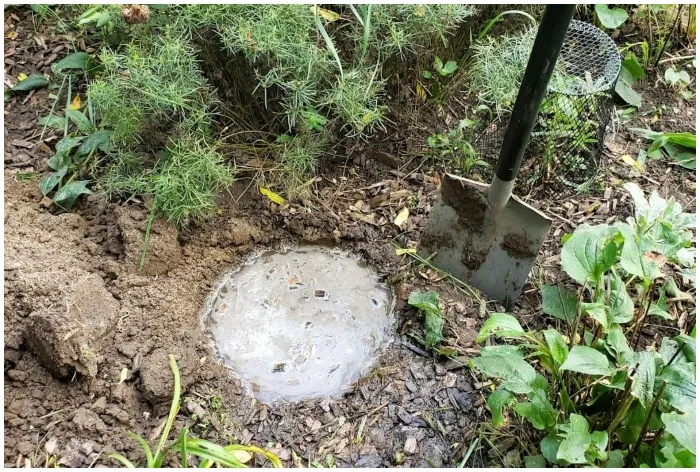
This approach allows water to flow through the soil, preventing waterlogging and protecting your plants’ roots. Additionally, incorporating organic material can improve soil structure and drainage, creating an ideal environment for vegetable growth.
Creating a Stable Environment
The stability of your garden’s location is essential for protecting young plants from harsh conditions. Windy spots can hinder plant growth, damage structures, and discourage pollinators. Choose a sheltered location or create windbreaks to minimize the impact of strong gusts.
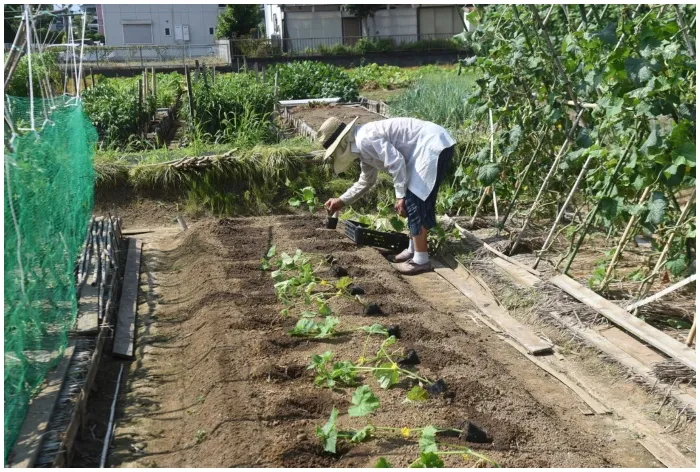
Additionally, avoid areas prone to heavy foot traffic or flooding, which can compact soil and harm roots. A stable, protected environment ensures your plants can grow undisturbed, leading to a more productive garden.
Nutrient-Rich Soil
Soil quality is at the heart of your garden’s success. Vegetables thrive in rich, nutrient-dense soil that supports their growth and development. If your soil is lacking, enriching it with organic matter such as compost or well-rotted manure can dramatically improve its fertility.
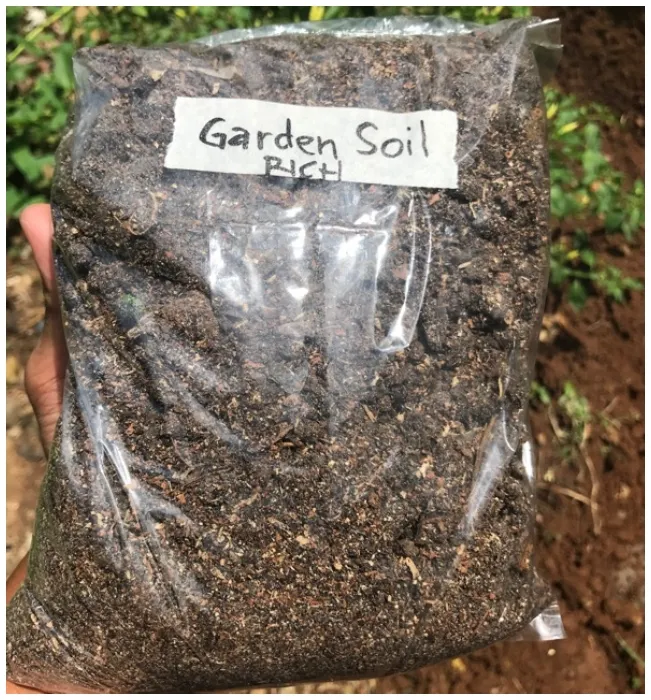
Testing your soil can provide valuable insights into its nutrient content and pH level, allowing you to make necessary adjustments. Investing time in building fertile, healthy soil sets the stage for a garden full of vibrant, nutritious vegetables.
Planning Your Garden Size: Keeping It Simple
Starting your gardening journey with a small, manageable plot can save you from the common pitfall of taking on too much, too soon. A compact garden reduces the workload and allows you to focus on the care and growth of your plants.
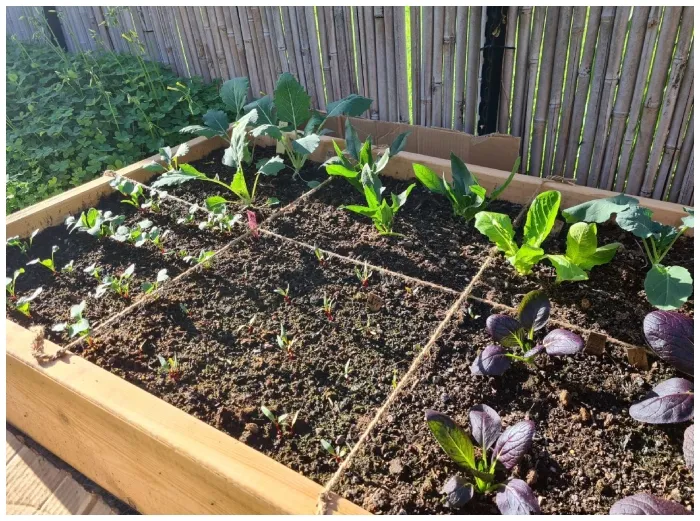
Aim for a garden size that you can comfortably maintain, ensuring that none of your efforts go to waste and you can truly enjoy the fruits (and vegetables) of your labor.
The Recommended Size For Your Garden
For those planting directly in the ground, a 100-square-foot area, about 10′ x 10′, is ideal for beginners. This size is perfect for growing 3 to 5 types of vegetables, with 3 to 5 plants of each, keeping variety manageable while still providing a rewarding harvest. If you’re leaning towards raised beds, starting with a 4′ x 4′ or 4′ x 8′ bed can offer a great introduction to gardening. Raised beds simplify many of the complexities of in-ground gardening, such as soil quality and drainage issues, and they can be easier on your back, too!
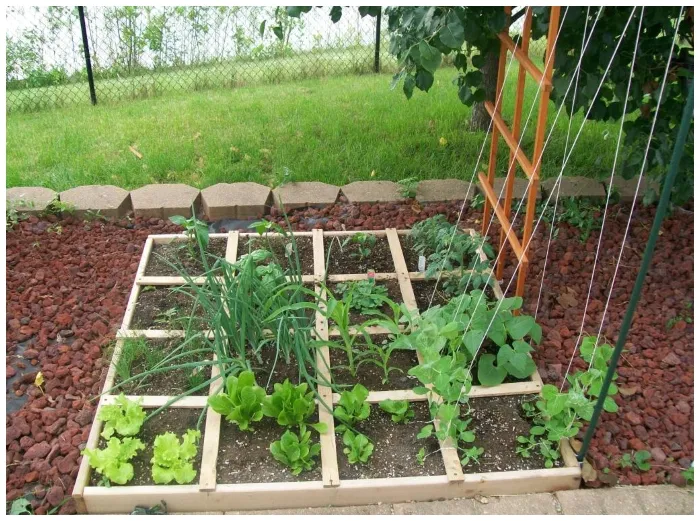
For beginners eager to expand, a maximum of a 12′ x 24′ plot should suffice. This size can accommodate a variety of plants like yellow squash, zucchini, peppers, tomatoes, okra, bush beans, cucumbers, eggplants, and herbs—enough to feed a family of four without overwhelming the gardener.
Choosing What to Grow
Selecting the right vegetables to grow is crucial. Begin with easy-to-grow, productive plants to see quick success. Many vegetables can be sown directly into the soil from seeds. Yet, it’s beneficial to consult with your state’s Cooperative Extension Service to identify which plants best suit your local climate and soil conditions.
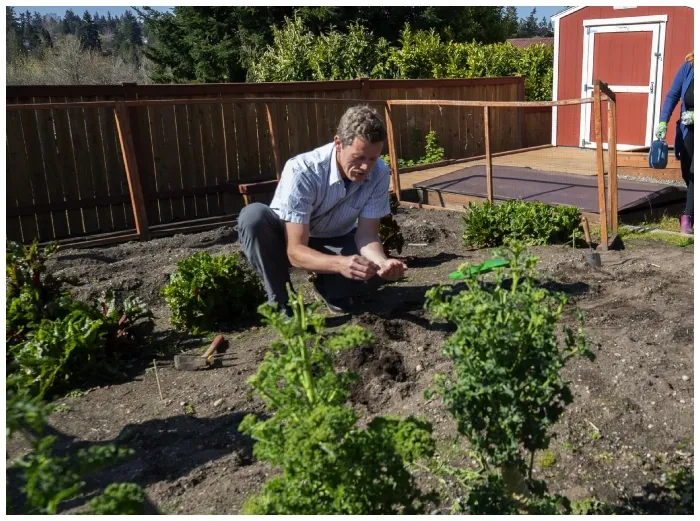
This can make a significant difference, especially in areas with extreme weather, where certain vegetables may not thrive as well. Starting with the right plants for your area can lead to a more productive and enjoyable gardening experience.
Microclimate Mastery with Plastic Bottles or Cones
Create a nurturing environment for young plants using an everyday item – plastic bottles. Cut the bottom off clear plastic bottles and place them over your seedlings. This simple hack creates mini-greenhouses that trap moisture and warmth, accelerating growth by creating a microclimate. It also protects vulnerable young plants from harsh winds and pests.
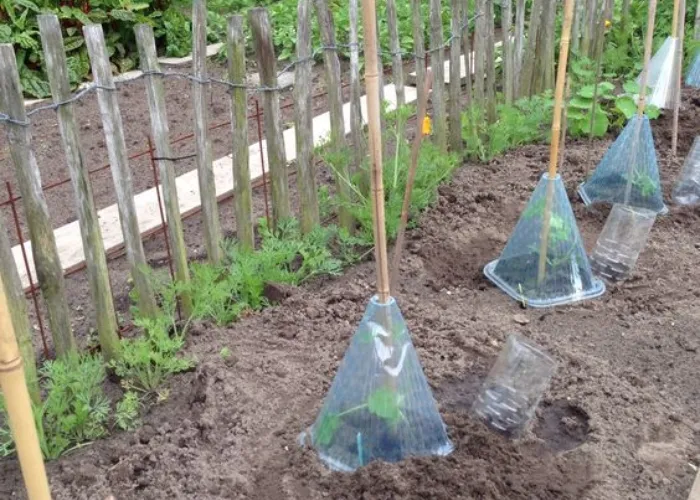
As your plants sprout and the weather warms, remove the bottles to allow them to harden off. This cost-effective method recycles materials and gives your garden a head start, ensuring your seedlings grow strong and sturdy.

